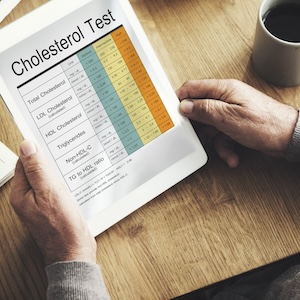Management and clinical outcomes of patients with homozygous familial hypercholesteremia in Saudi Arabia

Submitted: December 5, 2022
Accepted: December 26, 2022
Published: February 2, 2023
Accepted: December 26, 2022
Abstract Views: 2329
PDF: 554
Publisher's note
All claims expressed in this article are solely those of the authors and do not necessarily represent those of their affiliated organizations, or those of the publisher, the editors and the reviewers. Any product that may be evaluated in this article or claim that may be made by its manufacturer is not guaranteed or endorsed by the publisher.
All claims expressed in this article are solely those of the authors and do not necessarily represent those of their affiliated organizations, or those of the publisher, the editors and the reviewers. Any product that may be evaluated in this article or claim that may be made by its manufacturer is not guaranteed or endorsed by the publisher.
Similar Articles
- Elio Gorga, Marta Scodro, Francesca Valentini, Renzo D'Ortona, Mariachiara Arisi, Edoardo Sciatti, Ivano Bonadei, Valentina Regazzoni, Enrico Vizzardi, Marco Metra, Piergiacomo Calzavara Pinton, Echocardiographic evaluation of diastolic dysfunction in young and healthy patients with psoriasis: A case-control study , Monaldi Archives for Chest Disease: Vol. 88 No. 3 (2018)
- Marinella Sommaruga, Elisabetta Angelino, Paola Della Porta, Mara Abatello, Giacomo Baiardo, Gianluigi Balestroni, Ornella Bettinardi, Edward Callus, Chiara Ciracì, Ombretta Omodeo, Claudia Rizza, Paolo Michielin, Marco Ambrosetti, Raffaele Griffo, Roberto F.E. Pedretti, Antonia Pierobon, Best practice in psychological activities in cardiovascular prevention and rehabilitation: Position Paper , Monaldi Archives for Chest Disease: Vol. 88 No. 2 (2018)
- Carlos A. Jiménez-Ruiz, Marcos Garcia Rueda, Manuel A. Martinez Muñiz, Jacobo Sellarés, Maria A. Jiménez-Fuentes, Lourdes Lázaro Asegurado, Esther RodrÃguez Gonzalez, Concepción Rodriguez Garcia, Oriol Armengol, Emilia Abad, Teresa Peña, Adolfo Domenech del Rio, Juan A. Riesco Miranda, Varenicline in smokers with severe or very severe COPD after 24 weeks of treatment. A descriptive analysis: VALUE study , Monaldi Archives for Chest Disease: Vol. 87 No. 3 (2017)
- Francesco Barillà , Concetta Torromeo, Riccardo Iorio, Luigina Porco, Vincenzo Paravati, Carlo Gaudio, Antiplatelet therapy in elderly patients with acute coronary syndrome: Between scientific evidence and future perspectives , Monaldi Archives for Chest Disease: Vol. 88 No. 2 (2018)
- Gian Francesco Mureddu, Current multivariate risk scores in patients undergoing non-cardiac surgery , Monaldi Archives for Chest Disease: Vol. 87 No. 2 (2017)
- Sotirios D. Moraitis, Apostolos C. Agrafiotis, Amalia Kapranou, Marina Constantinou, Konstantinos Kanakakis, Panagiotis Hountis, Occurrence of thymic pathology in two families. Is familial screening justified? , Monaldi Archives for Chest Disease: Vol. 88 No. 3 (2018)
- Lucrezia Piccioli, Michele Arcopinto, Andrea Salzano, Roberta D'Assante, Alessandra Schiavo, Francesca M. Stagnaro, Anna Lombardi, Veronica Panicara, Pietro Valente, Giuseppe Vitale, Filippo M. Sarullo, Francesco Giallauria, Alberto M. Marra, The impairment of the Growth Hormone/Insulin-like growth factor 1 (IGF-1) axis in heart failure: A possible target for future therapy , Monaldi Archives for Chest Disease: Vol. 88 No. 3 (2018)
- Katia Rinero, Marzia Testa, Paola Vallauri, Sonia Garnero, Mauro Feola, Evaluating short term efficacy of educative support in a cardiovascular rehabilitation using the MICRO-Q test: a single centre experience , Monaldi Archives for Chest Disease: Vol. 80 No. 2 (2013): Cardiac series
- Francesco Giallauria, Rosa Lucci, Francesco Pilerci, Anna De Lorenzo, Athanasio Manakos, Marianna Psaroudaki, Mariantonietta D’Agostino, Alessandra Vitelli, Luigi Maresca, Domenico Del Forno, Carlo Vigorito, Efficacy of Telecardiology in improving the results of Cardiac Rehabilitation after acute myocardial infarction , Monaldi Archives for Chest Disease: Vol. 66 No. 1 (2006): Cardiac series
- Eduardo Bossone, Giuseppe Limongelli, Graziella Malizia, Francesco Ferrara, Olga Vriz, Rodolfo Citro, Alberto Maria Marra, Michele Arcopinto, Emanuele Bobbio, Domenico Sirico, Luigi Caliendo, Andrea Ballotta, Antonello D’Andrea, Alessandro Frigiola, Jorgen Isgaard, Luigi Saccà , Antonio Cittadini, The T.O.S.CA. Project: Research, Education and Care , Monaldi Archives for Chest Disease: Vol. 76 No. 4 (2011): Cardiac series
You may also start an advanced similarity search for this article.

 https://doi.org/10.4081/monaldi.2023.2503
https://doi.org/10.4081/monaldi.2023.2503





